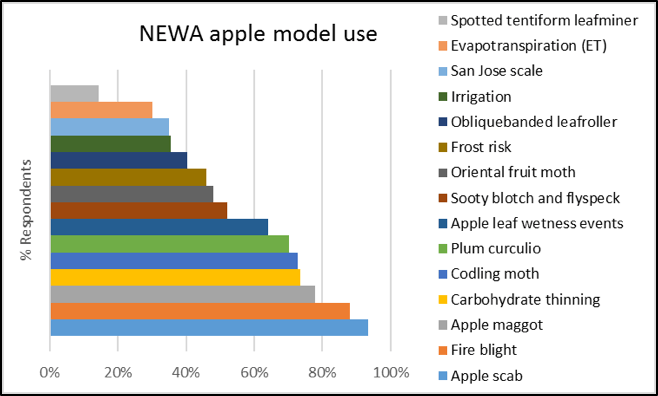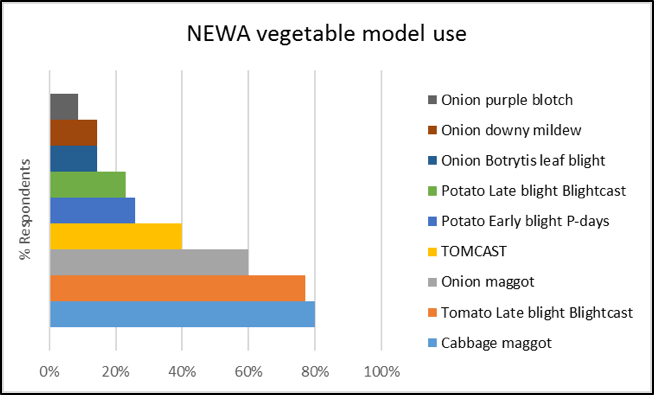Last updated 3/19/19
NEWA offers 23 different fruit and vegetable models and all use real-time weather data to generate research-based crop guidelines for growers in New York State and beyond. Extension specialists across the state provide expertise in different commodity areas and are available to provide management expertise and consultation regarding the utilization of NEWA guidelines on your farm.
Use this guide to locate a fruit or vegetable specialist in your region of New York. Click the hyperlinks to learn more about a specific NEWA model, extension program, or commodity specialist.
NEWA Apple Resources
Apple diseases. Fire blight, apple scab, sooty blotch fly speck.
Apple insects. Apple maggot, codling moth, obliquebanded leafroller, oriental fruit moth, plum curculio, San Jose scale, spotted tentiform leafminer.
Apple management. Blossom thinning, carbohydrate fruit thinning, irrigation modeling.
| Affiliation | Name |
| New York State IPM Program | Julie Carroll |
| Cornell Cooperative Extension Lake Ontario Fruit Team | Craig Kahlke |
| Mario Sazo | |
| Tessa Grasswitz | |
| Cornell Cooperative Extension Eastern New York Horticulture Team | Mike Basedow (northern NY) |
| Dan Donahue (Hudson Valley) |
NEWA Grape resources
Grape diseases. Black rot, phomopsis, powdery mildew, downy mildew.
Grape insects. Grape berry moth
| Affiliation | Name |
| Cornell Cooperative Extension Lake Erie Regional Grape Program | Tim Weigle (New York State IPM Program) |
| Jennifer Russo | |
| Andy Muza (Penn State Extension) | |
| Cornell Cooperative Extension Finger Lakes Grape Program | Hans Walter-Peterson |
| Cornell Cooperative Extension Eastern New York Horticulture Program | Jim Meyers |
| Cornell Cooperative Extension of Suffolk County | Alice Wise |
NEWA Vegetable resources
Vegetable diseases. Onion diseases, potato diseases, tomato diseases.
Vegetable insects. Cabbage maggot, onion maggot.

